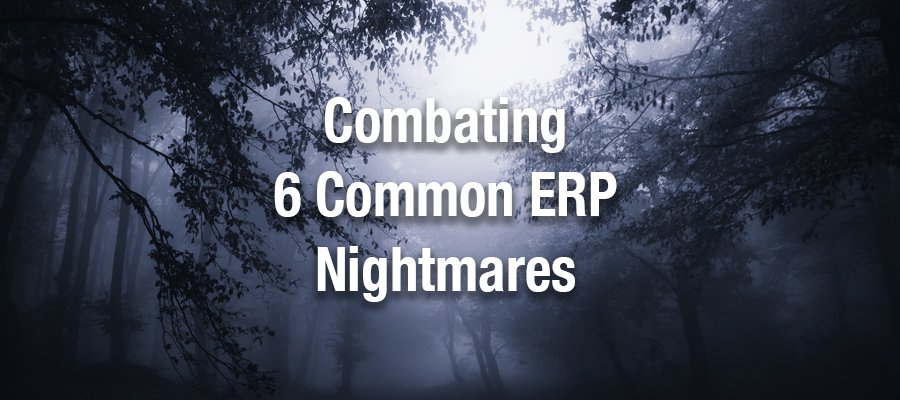It’s not often that an ERP evaluation project is on the bucket list of manufacturing professionals. But when the right solution is selected, it can be the best decision a business can make. In this article, we will reveal some of the most common ERP nightmares we have heard, and share tips on how you can avoid them.
“Our provider was able to help with small things but doesn’t contribute to the big picture.”
Before evaluations begin, it is important to identify your company’s top 3-5 critical business issues. These are the points that should drive discussions and uncover more than a solution’s ability to handle basic tasks like order-to-cash processes or report generation. Think about what the business needs in order to double its growth, and lead the evaluation with these challenges at the forefront.
“Our ERP provider has no idea about what is important to our business.”
Don’t select a provider who tries to be everything to everybody. Make sure they can provide everything for your specific industry. Those manufacturers in the aerospace, government, or fashion markets probably have very little in common with businesses in the food, chemical, or pharmaceutical industries. So why are you using the same ERP solution?
Find a provider that dedicates its resources to tackling the challenges and opportunities within your industry. A solution that is tailored to your business’s specific needs will drive future growth.
“We are often doing work in Excel to fill in the gaps of our ERP.”
Stop! This phrase makes us cringe every time we hear it. As businesses evolve, so will system requirements. Therefore, companies need to make sure the ERP system can scale with the business.
Looking into the future, how many facilities will your business have? Will the company expand internationally? Are acquisitions an option? The ERP of choice should have the flexibility to adapt and encourage this growth. Working outside the system wastes time and increases the risk of human error. Don’t settle for an option that might require re-investment five years from now.
“Our ERP is something out of the 1990’s.”
Find a provider that not only operates on newer technology but has the structure in place to adapt as the industry evolves over time. Stale, outdated technology can restrict business growth and employee adoption, but a solution with centralized business logic can react quicker to changes.
“I have no control over our ERP software.”
Identify the level of software control the business will have during and after implementation. Working with 3rd party vendors for functionality and/or implementation can restrict businesses from fine-tuning the software in the ways they need. By investing in a more cohesive solution without these external elements, businesses maintain a higher level of control over its capabilities.
“We seem to keep blowing through budgets just to get the software to work the way we were told it would.”
Many ERP vendors close the deal with a low quote knowing that the unidentified need for customizations, modules, and support will drive the overall cost of ownership. To prevent this from happening, don’t be afraid to ask the vendor to demonstrate how the system can do certain tasks. Provide realistic data for them to prove its ability to you on the spot, rather than taking their word for it.
Also, find an ERP provider that is transparent with their pricing model and doesn’t rely on hidden costs to generate revenue. Some things to look for include: configurations over customizations, single-system architecture, and a guaranteed fixed cost. Identifying these characteristics in an ERP solution will help make sure you stick to the budget and don’t break the bank.
There you have it: the most common ERP nightmares circling the industry today. By applying these tips, you will be able to prevent these situations from becoming reality.

